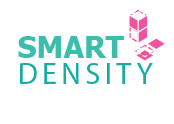Could COVID-19 be the best thing that happened to the traditional Open House?
CreateTO and City Planning have held its first-ever online-only Open House yesterday, for the HousingNOW revised proposal for 705 Warden St.
COVID-19 forced us to rethink and adjust many of our daily routines, and in this specific case of the Open House, I am glad it did. It was about time.
Happening now on line – over 200 participants so far / discussing the details of proposed 600 unit Housing Now development at 705 Warden including about 250 affordable units with new parkland, retail & community space @CityPlanTO @_CreateTO @TORHousing pic.twitter.com/fZfjZPskM5
— Gregg Lintern (@GreggLintern) May 13, 2020
It was the best Open House I attended. Why?
- It was time-efficient. If usually it takes 2-3 hours that include reception, presentation and Q&A, now the presentation was uploaded in advance and went right to the Q&A.
- The panellists and audience were muted when someone else was talking, preventing the usual condition where the loudest ones are the ones being herd the most.
- The questions were collected in advance, allowing more people to submit their inquiries and for the facilitator to review the concerns before the panel.
- It still had its usual share of NIMBYism, which shows that it still allows people to raise their concerns, whether justified or not.
But above all, there is a rare opportunity to address some of the inherent problems of the traditional Open House.
What didn’t work in the traditional model?
The basic format of the Open House meeting raises some critical questions:
- Will all the relevant stakeholders take advantage of the opportunity to attend the meeting? There is evidence that some stakeholders (for example, families with young children) do not attend traditional Open Houses.
- Considering the time investment required for participation, will the attendees be representative of the stakeholders, or will they be a self-selected group of those who have strong agendas?
- From the ones who attend, will they participate in the discussion in a representative manner?
- Given the predefined time-window for a specific meeting and the physical configuration of the meeting, how can we ensure that we have a full and accurate understanding of all the perspectives?
If COVID-19 limits the ability to conduct a public consultation using traditional tools, how can we fulfil the mandate for public consultation, and more so, how can we use the constraints of this time as an opportunity to improve the traditional consultation process even further?
Related reads:
4 of the Most Creative Community Engagement Ideas for City Planners
